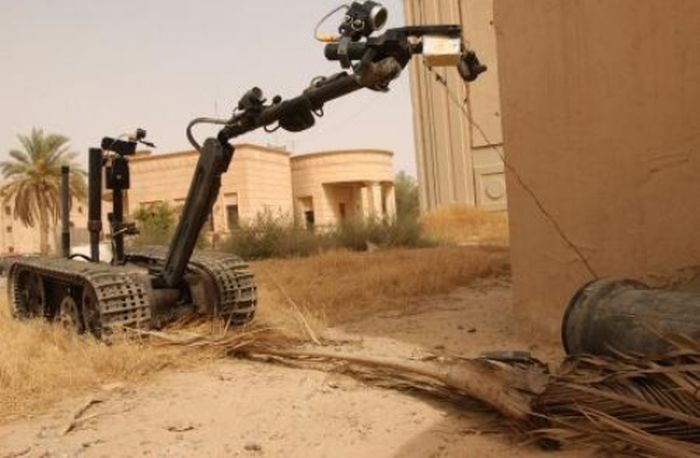|
|
EOD Bomb Explosive Ordnance Disposal Robot
|
Generally EOD render safe procedures (RSP) are a type of tradecraft protected from public dissemination in order to limit access and knowledge, depriving the enemy of specific technical procedures used to render safe ordnance or an improvised device. Another reason for keeping tradecraft secret is to hinder the development of new anti-handling devices by their opponents: if the enemy has thorough knowledge of specific EOD techniques, they can develop fuze designs which are more resistant to existing render-safe procedures.
Many techniques exist for the making safe of a bomb or munition. Selection of a technique depends on several variables. The greatest variable is the proximity of the munition or device to people or critical facilities. Explosives in remote localities are handled very differently from those in densely-populated areas. Contrary to the image portrayed in modern day movies, the role of the Bomb Disposal Operator is to accomplish their task as remotely as possible. Actually laying hands on a bomb is only done in an extremely life-threatening situation, where the hazards to people and critical structures cannot be reduced.
Ammunition Technicians have many tools for remote operations, one of which is the RCV, or remotely controlled vehicle, also known as the "Wheelbarrow". Outfitted with cameras, microphones, and sensors for chemical, biological, or nuclear agents, the Wheelbarrow can help the Technician get an excellent idea of what the munition or device is. Many of these robots even have hand-like manipulators in case a door needs to be opened, or a munition or bomb requires handling or moving. The first ever Wheelbarrow was invented by Lieutenant-Colonel 'Peter' Miller in 1972 and used by Ammunition Technicians in the battle against Provisional Irish Republican Army bombs.
Also of great use are items that allow Ammunition technicians to remotely diagnose the innards of a munition or bomb. These include devices similar to the X-ray used by medical personnel, and high-performance sensors that can detect and help interpret sounds, odors, or even images from within the munition or bomb. Once the technicians determine what the munition or device is, and what state it is in, they will formulate a procedure to disarm it. This may include things as simple as replacing safety features, or as difficult as using high-powered explosive-actuated devices to shear, jam, bind, or remove parts of the item's firing train. Preferably, this will be accomplished remotely, but there are still circumstances when a robot won't do, and a technician must put themself at risk by personally going near the bomb. The Technician will don a specialized protective suit, using flame and fragmentation-resistant material similar to bulletproof vests. Some suits have advanced features such as internal cooling, amplified hearing, and communications back to the control area. This suit is designed to increase the odds of survival for the Technician should the munition or bomb function while they are near it.
|
|









